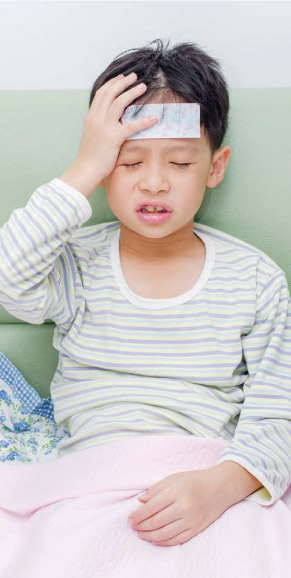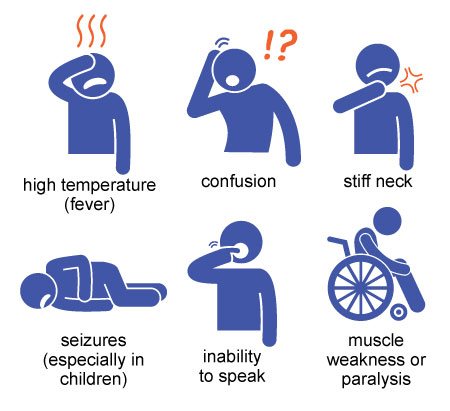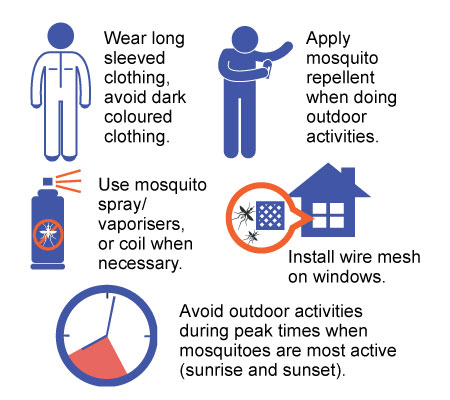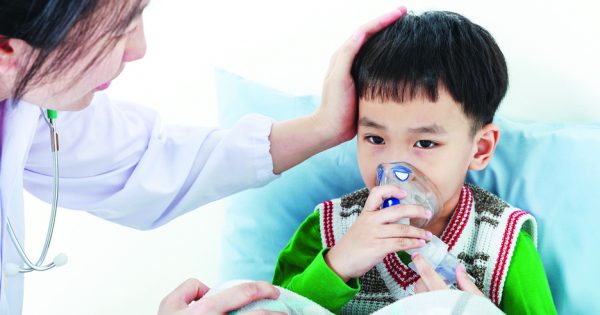Japanese encephalitis (JE) is a flavivirus related to dengue, yellow fever and West Nile viruses, and is spread by mosquitoes. It is estimated that globally, 13,600 to 20,400 acutely fatal JE cases occur and that 14,300 to 27,200 JE survivors develop longterm neurological damage each year. JE can be found in South Asia, Southeast Asia, East Asia, and the Pacific. An estimated 3 billion people live in countries where the JE virus is endemic.
JE primarily affects children and, most adults in endemic* countries have natural immunity after childhood infection, but individuals of any age may be affected. Because JE is more predominant in rural areas of the country, it is suspected that the incidence of JE in Malaysia may be underrepresented.
ENDEMIC – A disease commonly found among particular people or in a certain area.
Transmission of the JE Virus
The main JE vectors are Culex tritaeniorhynchus mosquitoes and similar species that lay eggs in rice paddy fields and other open water sources (Mansonia and Anopheles species). They carry the virus with them after they bite either pigs or wading birds, which are amplifying hosts* for the JE virus.
AMPLIFYING HOST – Is a host in which infectious agents, such as JE virus, rapidly multiply to high levels that when vectors such as mosquitoes bite them, the mosquitoes too, become infected.
Humans are considered dead-end hosts for JE virus, meaning the virus is unable to multiply to high levels, hence, the virus cannot be passed on to other biting mosquitoes or from person to person.
Symptoms of JE
Most people who are infected show very mild flu-like to no symptoms at all. In persons who develop symptoms, the incubation period (the time between catching an infection and symptoms appearing) is typically 5-15 days. About 1 in every 250-people infected will develop more serious symptoms such as:
Thirty percent of patients who are affected by disease symptoms may die. For patients who do survive these more serious symptoms, recovery is sluggish and 20-30% of them may also develop inflammation of the brain (encephalitis), causing irreversible neurological damage.
Who Are More At Risk?
Anyone can be infected, however, there are certain people who may be more at risk such as:
People living or working in areas near pig farms or agricultural land (e.g. paddy fields).
Travellers who are planning extensive outdoor exposure (camping, hiking, working, etc.) in endemic countries, especially in rural areas.
Locals who are planning long trips to areas where cases have been recorded.
Treatment & Prevention
Treatment is focused on relieving symptoms and supporting the patient to overcome the infection. Because there is no cure for the disease, prevention should be prioritised. This can be done either by avoiding mosquito bites and/or by getting vaccinated against the virus.
Avoid mosquito bites:
Get Vaccinated:
- In Sarawak, JE vaccine is covered under the National Immunisation Programme (NIP). Each child will receive a total of 3 doses, the first two initial doses to be administered at the age of 9 and 21 months, followed by a booster dose at 7 years.
- Studies on the effectiveness of the JE vaccine in Sarawak concluded that over a 10-year surveillance period (1997-2006), the vaccine had substantially reduced the number of JE cases and the risk of infection.
- People living in other areas can get vaccinated at private clinics nationwide. Consult your doctor about getting vaccinated and whether it is suitable for you.
An educational contribution by Malaysian Paediatric Association.










Comments